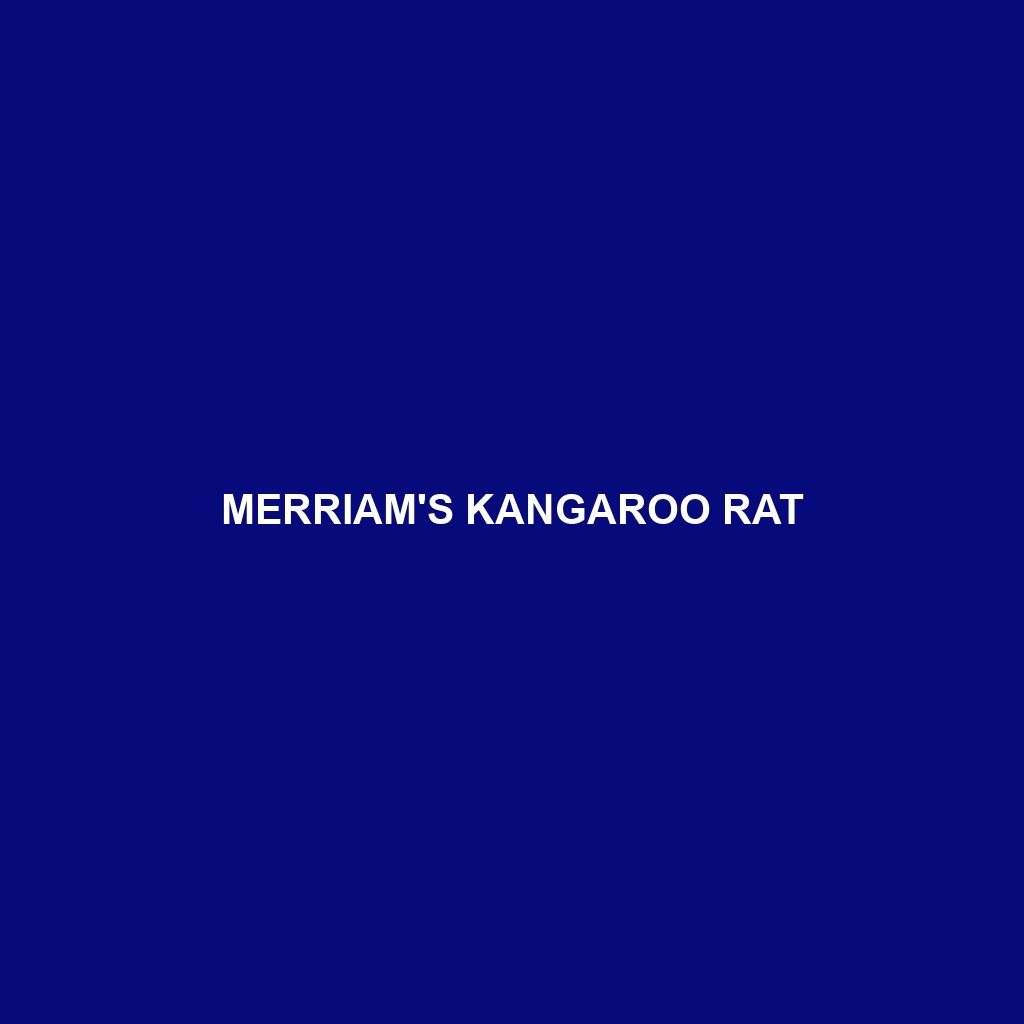Merriam’s Kangaroo Rat
Common Name: Merriam’s Kangaroo Rat
Scientific Name: Dipodomys merriami
Habitat
Merriam’s Kangaroo Rat is primarily found in the arid landscapes of the southwestern United States and northern Mexico. This species thrives in sandy and loose soils, commonly inhabiting desert scrub and grassland regions, which provide ample shelter and food sources. Key geographical locations include parts of Arizona, New Mexico, and Texas.
Physical Characteristics
Merriam’s Kangaroo Rat typically measures about 10 to 12 inches in length, including a long tail that often equals or exceeds the body length. Their fur is soft and tawny-brown, providing effective camouflage against their sandy habitats. Distinctive features include large hind feet, which are adapted for jumping, and large external ears that aid in thermoregulation and predator detection.
Behavior
This species is primarily nocturnal, foraging for food during the cool evening hours to avoid the heat of the day. Merriam’s Kangaroo Rat exhibits fascinating behaviors such as constructing intricate burrows that provide refuge from predators and harsh environmental conditions. They are also known for their ability to jump several feet, which is beneficial for escaping from threats.
Diet
Merriam’s Kangaroo Rat primarily feeds on seeds, nuts, and grasses, which it collects and stores in its burrow for later consumption. This granivorous diet helps to play a crucial role in seed dispersal, influencing plant community dynamics in their ecosystems. They have adapted to survive with minimal water intake, obtaining hydration from their food sources.
Reproduction
The breeding season for Merriam’s Kangaroo Rat typically occurs in the spring and summer months. Females usually give birth to litters of 2 to 5 offspring after a gestation period of about 30 days. The young are altricial at birth, meaning they are born hairless and blind, requiring significant care from the mother during their initial development stages.
Conservation Status
Currently, Merriam’s Kangaroo Rat is classified as “Least Concern” according to the IUCN. However, habitat loss due to urban development and agriculture poses ongoing threats to their populations. Conservation efforts are necessary to monitor their habits and protect their habitats from encroachment.
Interesting Facts
Merriam’s Kangaroo Rat is known for its remarkable adaptation to desert life, including its ability to survive without drinking water. Instead, it metabolizes water from the seeds it eats and uses specialized kidneys to conserve water, making it a fascinating study for researchers interested in desert ecology.
Role in Ecosystem
Merriam’s Kangaroo Rat plays a vital role in its ecosystem by aiding in seed dispersal and serving as prey for various predators, including owls, snakes, and foxes. Their burrowing activities help aerate the soil and promote plant growth, demonstrating their importance in maintaining ecological balance within desert environments.
